Why AI Matters Now in Ecommerce
The ecommerce industry has undergone seismic shifts in the last decade. Online shopping moved from being a convenient alternative to physical stores into the primary channel for millions of consumers worldwide. Yet with this growth came new challenges: rising acquisition costs, intense competition, complex supply chains, and sky-high customer expectations.
Retailers are learning that scaling is not just about expanding product lines or entering new markets. It requires smarter decision-making, automation, and agility. Traditional approaches — relying on gut instinct, manual spreadsheet analysis, or siloed data — cannot keep pace with the velocity of change.
Enter artificial intelligence (AI).
AI tools today are no longer experimental lab projects reserved for Fortune 500 companies. Thanks to advances in machine learning, natural language processing, and multimodal models, sophisticated AI capabilities are now available to retailers of all sizes. From plug-and-play SaaS tools to enterprise-grade platforms, ecommerce teams can harness AI to personalize shopping experiences, optimize pricing in real time, forecast demand with unprecedented accuracy, and automate customer service at scale.
The result? Retailers can do more with fewer resources, cut inefficiencies, and accelerate growth. But not all AI applications are created equal. Knowing which tools to prioritize, how to implement them, and how to measure ROI is critical for success.
This guide explores the new wave of AI in ecommerce: the tools reshaping retail, real-world case studies, implementation roadmaps, pitfalls to avoid, and the trends shaping the future. Whether you’re a DTC brand, a marketplace seller, or an enterprise retailer, these insights will help you scale smarter, faster, and more profitably.
The State of Ecommerce Today: Key Challenges AI Can Solve
Before diving into the tools, let’s ground ourselves in the current reality of ecommerce. Despite global growth, many retailers are struggling with fundamental obstacles:
- Rising Customer Acquisition Costs (CAC). Paid media has become expensive. Competition on platforms like Google, Facebook, and TikTok means retailers must squeeze more value out of every visitor.
- Fragmented Customer Journeys. Shoppers move fluidly between social media, websites, apps, and marketplaces. Providing consistent, personalized experiences across these channels is nearly impossible without automation.
- SKU Proliferation. Brands now carry thousands of products, variations, and bundles. Manually managing merchandising and inventory planning doesn’t scale.
- Inventory Volatility. Stockouts frustrate customers; overstocks tie up working capital. Global supply chain instability has only made this harder.
- High Support Costs. Scaling human-based customer support is expensive and slow, yet shoppers demand instant responses 24/7.
- Data Silos. Retailers often have data scattered across CRMs, ERPs, PIMs, and analytics systems, making holistic insights difficult.
AI tools directly target these pain points. By automating predictions, personalization, and operational tasks, AI creates efficiency while freeing humans to focus on strategy and creative innovation.
Key AI Tool Categories in Ecommerce
Let’s explore the core categories where AI is driving transformation. Each of these tool types solves a specific set of ecommerce challenges.
1. Personalization & Product Recommendation Engines
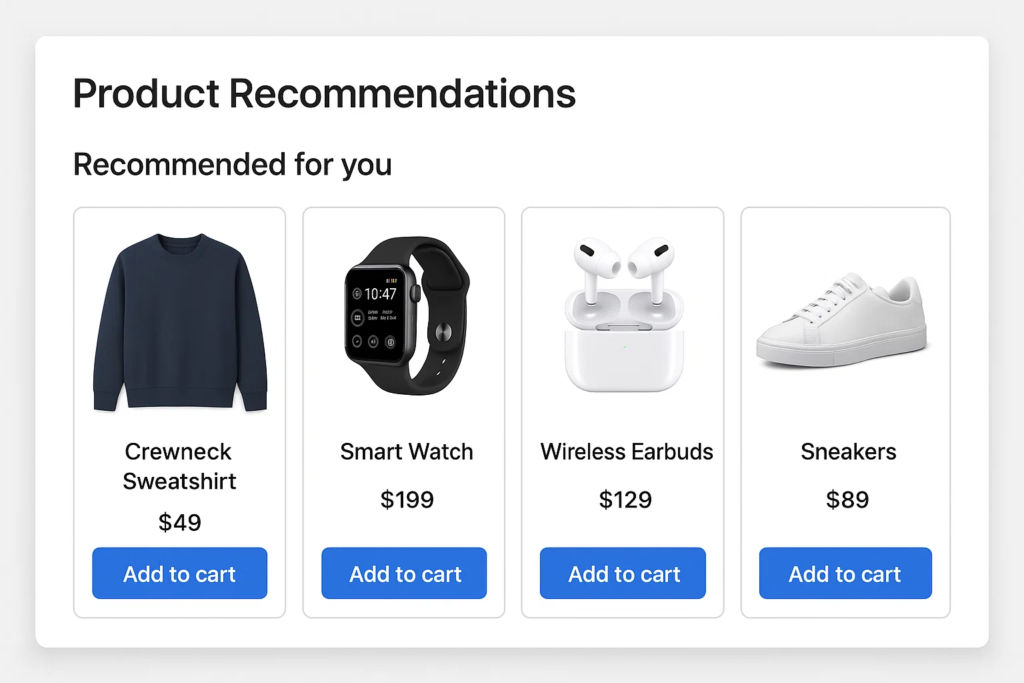
What they do:
Recommendation engines analyze browsing behavior, purchase history, demographics, and real-time signals to surface relevant products. They can personalize homepage layouts, email campaigns, category rankings, and in-session product recommendations.
Why it matters:
Personalization can increase conversion rates by 10–30% and boost average order value (AOV). By showing the right product to the right person at the right time, retailers maximize every visit.
How they work:
Modern engines use hybrid models: collaborative filtering (customers who bought X also bought Y), content-based embeddings (matching product attributes to user preferences), and session-level deep learning (capturing context in real time).
Practical tip: Start small. Implement A/B tests on homepage recommendations and measure incremental revenue per visitor. Expand to cross-sell and upsell placements once proven.
2. Visual Search & Shoppable Images

What they do:
Visual search allows shoppers to upload an image — a photo of shoes, furniture, or an outfit — and find visually similar products instantly. Shoppable images turn lifestyle photography or social content into interactive shopping experiences.
Why it matters:
Fashion, décor, and lifestyle categories thrive on visuals. Shoppers don’t always have the words to describe what they want, but they can show it. Visual search bridges that gap, reducing friction and improving discovery.
How they work:
AI models generate embeddings (vector representations) of images, then match them against product catalogs using vector search databases. Combined with automated tagging, they make large catalogs navigable by sight.
Practical tip: Ensure high-quality tagging and periodically review results. Start with top-selling SKUs where discovery friction is highest.
3. Inventory Planning & Demand Forecasting
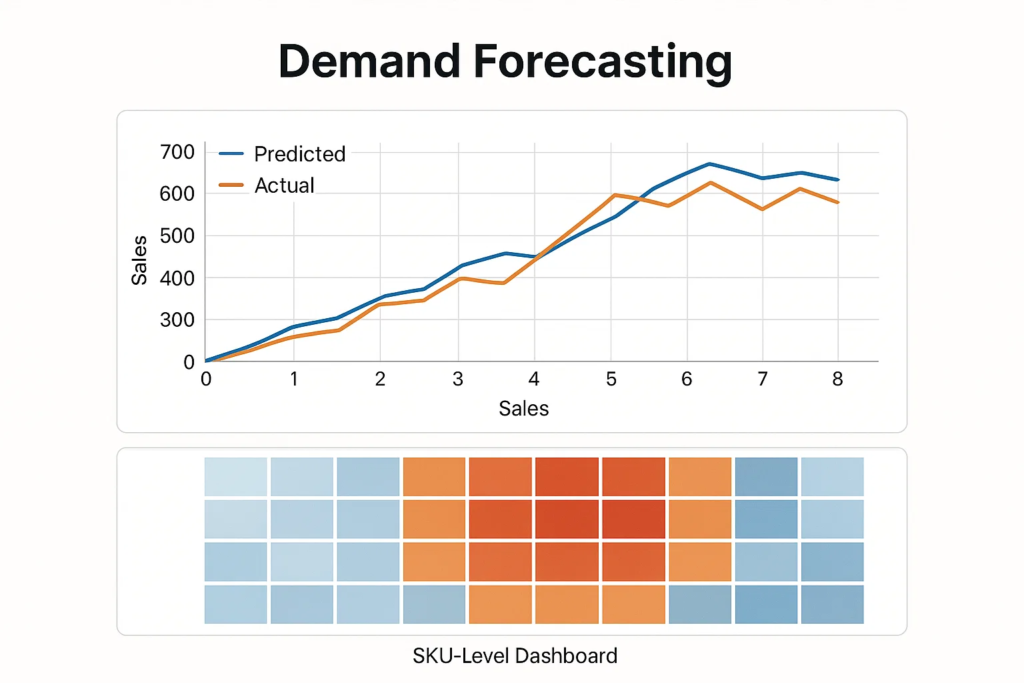
What they do:
AI models predict SKU-level demand across channels and regions, factoring in seasonality, promotions, ad spend, and external signals like weather or events.
Why it matters:
Accurate forecasting reduces stockouts, improves fulfillment, and prevents overstocking that ties up cash. For large retailers, even a small percentage improvement in forecast accuracy can translate into millions saved.
How they work:
Modern forecasting blends statistical models (ARIMA, Prophet) with machine learning models (gradient boosting, LSTMs, transformers).
Practical tip: Pilot forecasting on your top 100 SKUs. Measure Mean Absolute Percentage Error (MAPE) against current forecasts to quantify gains before full rollout.
4. Dynamic Pricing & Promotion Optimization
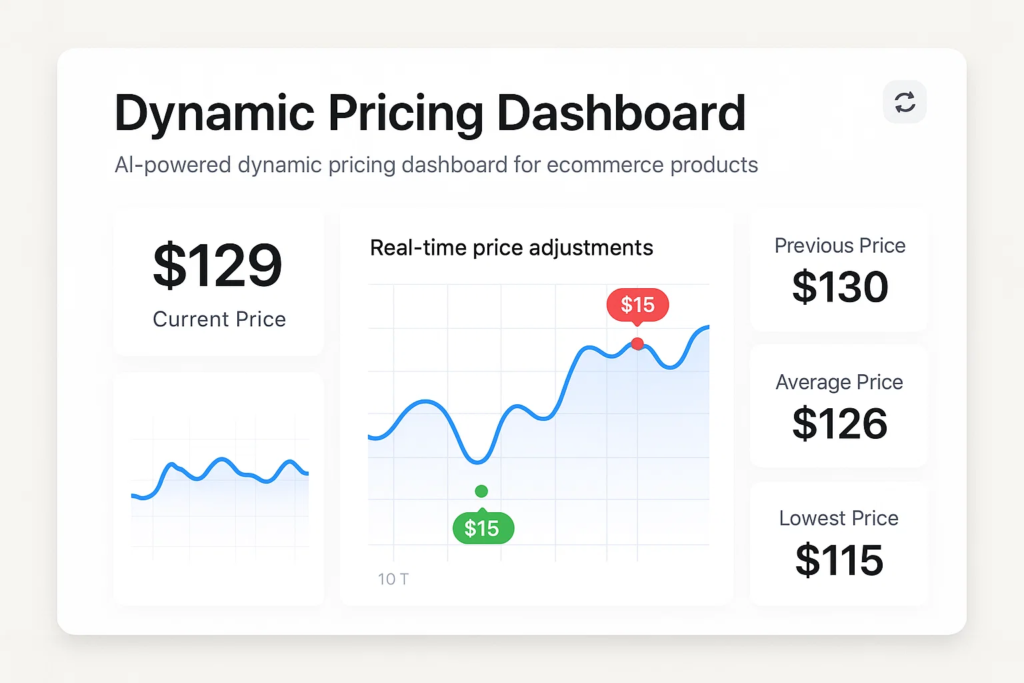
What they do:
AI adjusts product prices in real time based on demand, competitor pricing, inventory levels, and margin targets. It also tailors promotions to maximize conversions without eroding profitability.
Why it matters:
Margins are often razor-thin in ecommerce. Dynamic pricing can boost profitability while ensuring competitive positioning.
How they work:
Algorithms model price elasticity (how demand changes with price), then test price adjustments within guardrails (minimum margin, frequency limits).
Practical tip: Avoid over-automation. Maintain brand trust by setting floors and ceilings, and monitor customer sentiment.
5. AI-Generated Product Content
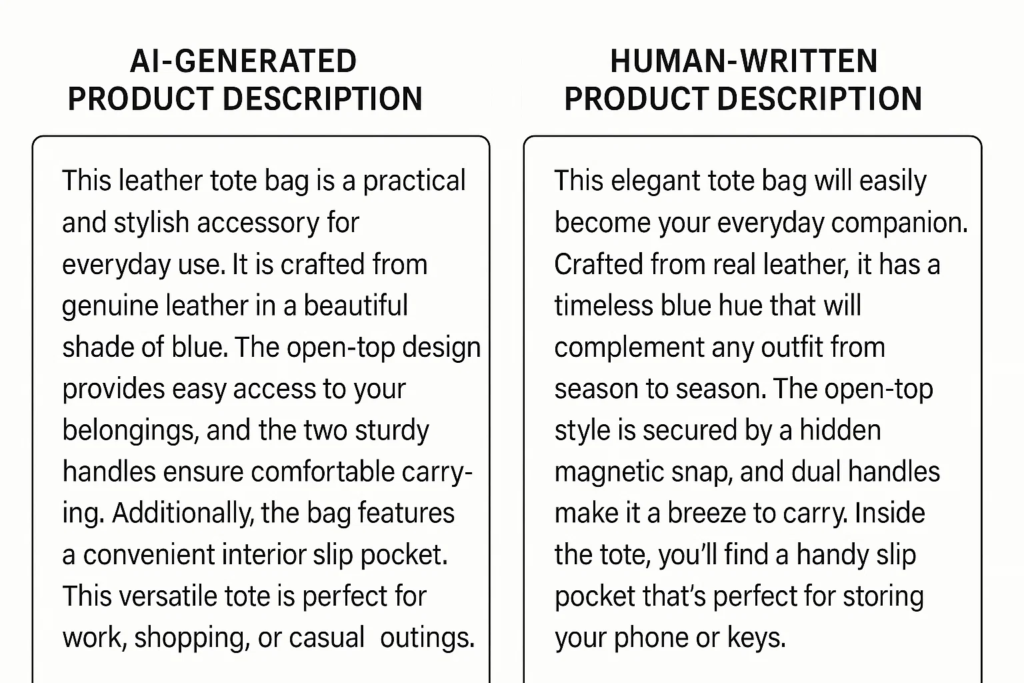
What they do:
Generative AI creates product descriptions, titles, meta tags, and localized content at scale. It can also generate enhanced product content (A+ pages) with improved storytelling.
Why it matters:
Onboarding thousands of SKUs manually is slow and inconsistent. AI accelerates catalog enrichment and ensures SEO-friendly descriptions.
How they work:
Large language models (LLMs) generate copy based on structured product attributes, enriched with brand guidelines and tone-of-voice prompts.
Practical tip: Always maintain a human-in-the-loop process. Use AI to draft, then have editors review for accuracy and compliance.
6. Conversational Commerce: Chatbots & Voice Assistants
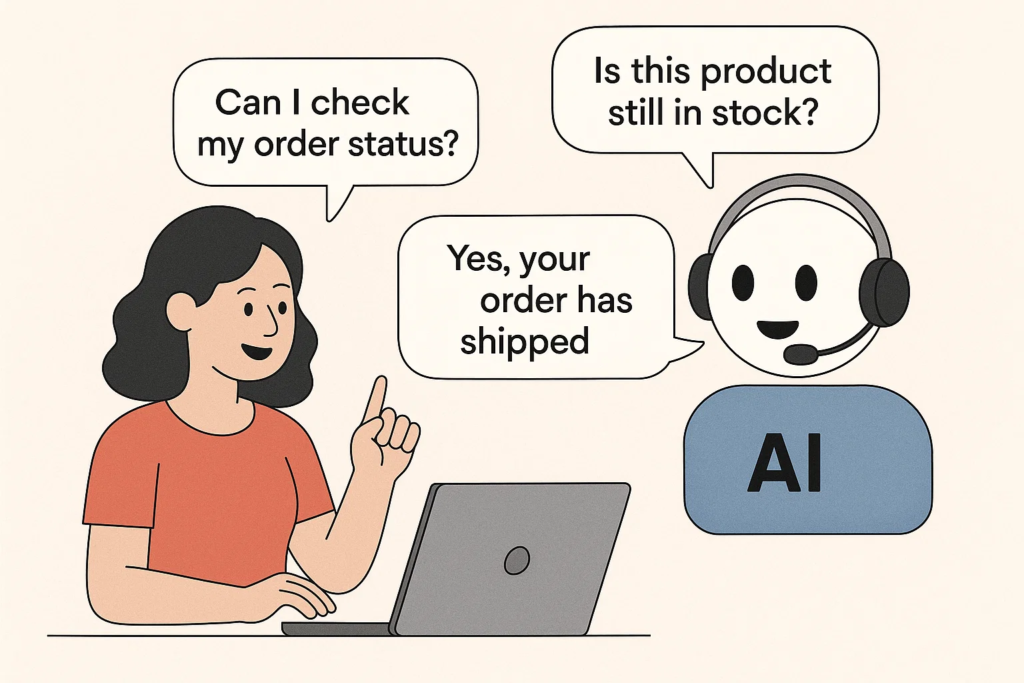
What they do:
AI chatbots handle routine customer queries (order tracking, returns, FAQs), guide product discovery, and collect sales leads. Voice assistants enable shopping via natural language.
Why it matters:
24/7 instant responses reduce support costs and improve customer satisfaction. Conversational interfaces also drive higher engagement.
How they work:
Natural language models trained on ecommerce FAQs plus live integration with order systems. Some tools augment human agents by summarizing customer history and suggesting responses.
Practical tip: Implement clear escalation paths to humans for complex issues. Track metrics like average handle time and resolution rates.
7. Fraud Detection & Payments Intelligence
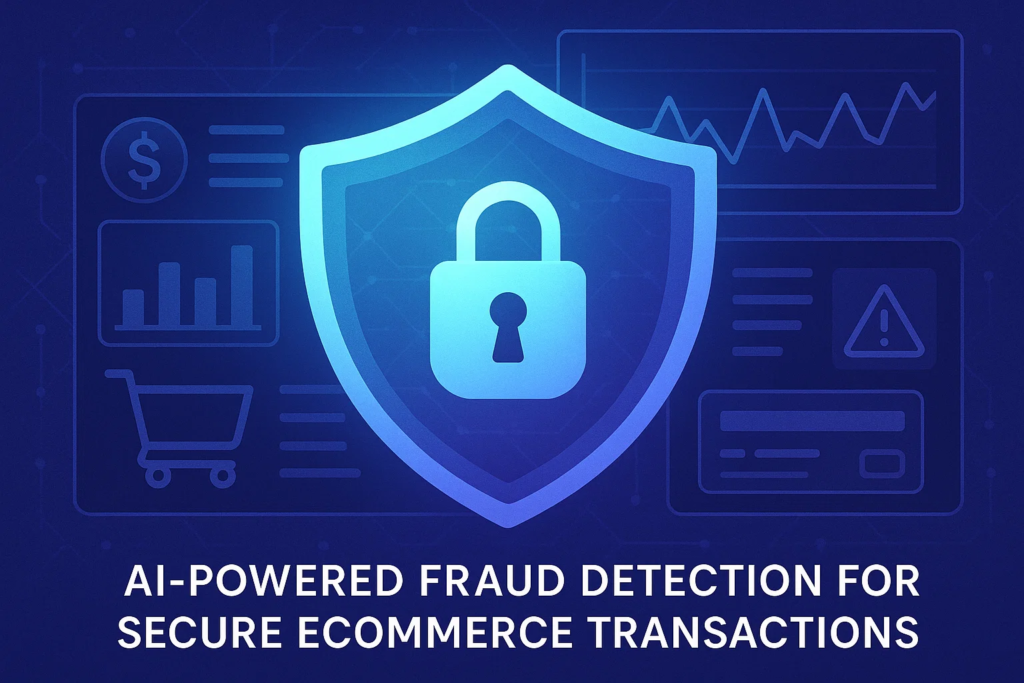
What they do:
AI scores transactions in real time for fraud risk, using signals like device fingerprinting, behavioral biometrics, and transaction history.
Why it matters:
Chargebacks and fraud can severely impact margins. AI reduces manual review and false positives.
Practical tip: Regularly tune thresholds by geography; fraud patterns differ between markets.
8. Logistics & Warehouse Automation
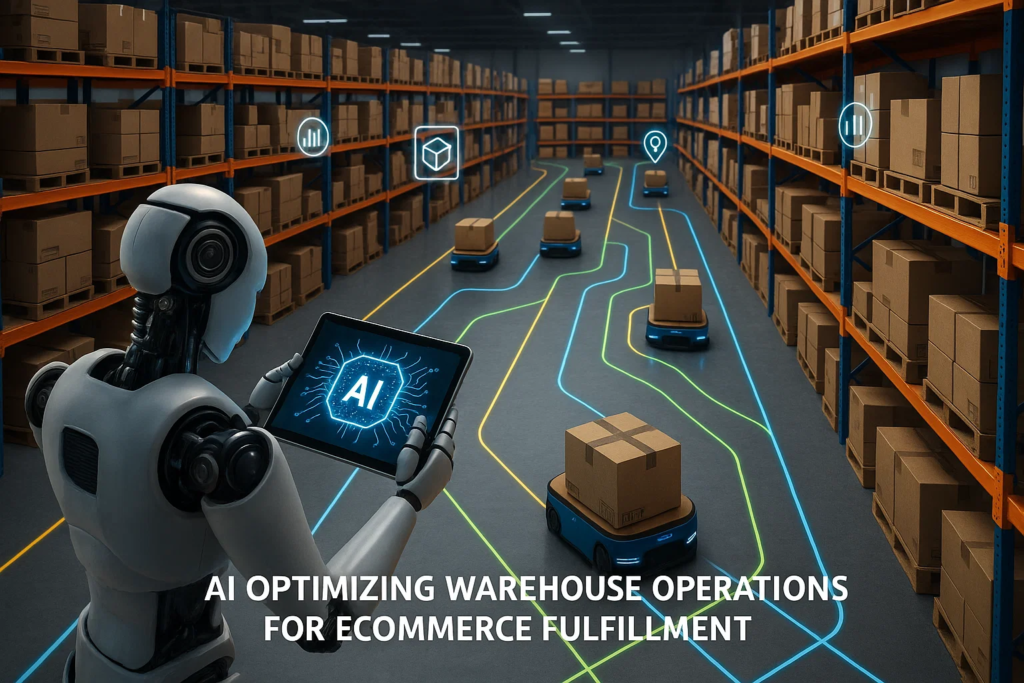
What they do:
AI optimizes picking routes, slotting items in warehouses, and last-mile delivery routes. Computer vision checks product quality and counts.
Why it matters:
Faster, cheaper fulfillment improves customer satisfaction and reduces costs per order.
Practical tip: Start with software-based optimization before investing in robotics.
9. Returns Management & Reverse Logistics
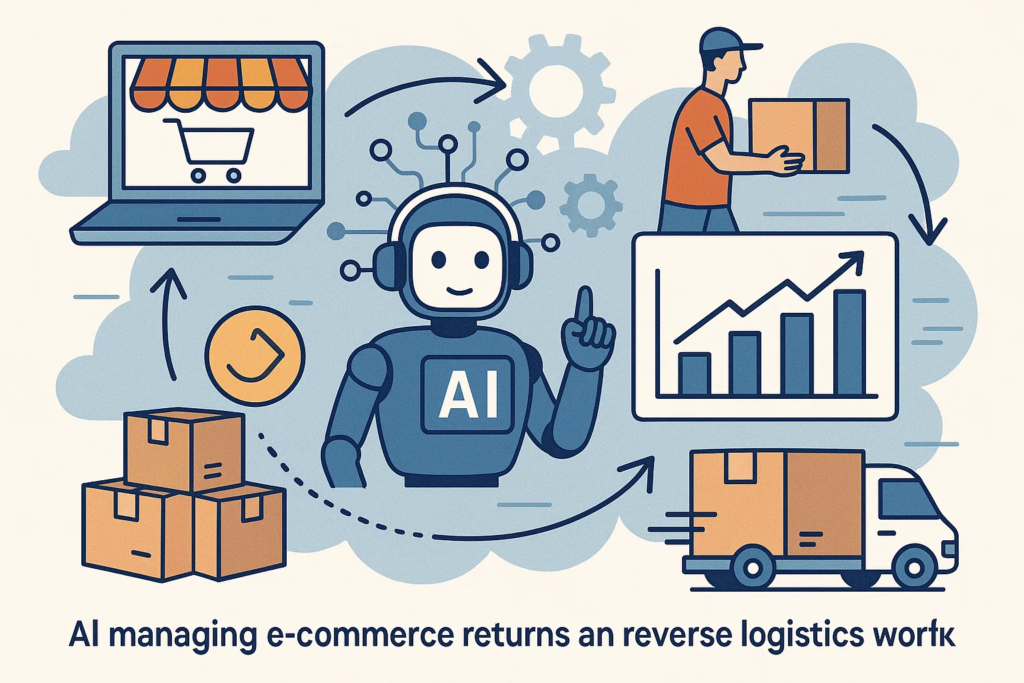
What they do:
AI predicts which orders are most likely to be returned, automates return approvals, and recommends alternative products to keep customers engaged.
Why it matters:
Returns eat into profit margins. Smarter return management reduces costs and preserves revenue.
Practical tip: Use predictive models at checkout to offer incentives (e.g., discounts) that lower return risk.
10. Analytics, Attribution & Automated Reporting
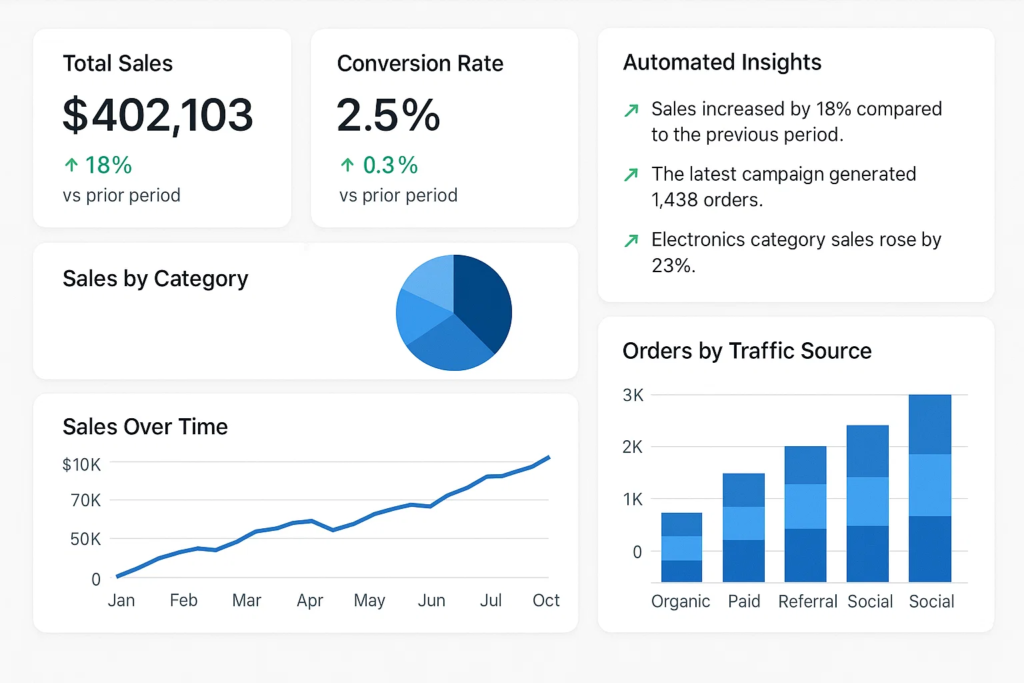
What they do:
AI stitches together omnichannel data, attributes conversions accurately, detects anomalies, and generates natural-language insights.
Why it matters:
Teams save hours on manual reporting and make faster decisions.
Practical tip: Validate AI-generated insights with domain experts before automating decisions.
Real-World Case Studies
Fashion Retailer: Personalization + Visual Search
A mid-sized fashion brand piloted AI personalization on its homepage and email campaigns. Conversion rates for returning visitors increased by 18%. They also implemented visual search, allowing shoppers to upload outfit photos. Though only 6% of users tried the feature, those who did converted 1.8x higher than average.
Electronics Brand: Demand Forecasting + Pricing
A DTC electronics company implemented demand forecasting, reducing forecast error (MAPE) from 35% to 12%. They paired this with dynamic pricing, which optimized launch-day pricing. Result: 7% margin improvement and 12% reduction in expedited shipping.
Marketplace Seller: Conversational Commerce
A third-party seller integrated AI chatbots and live-agent augmentation. Routine inquiries (order status, returns) dropped by 40%, and customer satisfaction scores rose due to faster responses.
Implementation Roadmap
Scaling AI in ecommerce requires a structured approach:
- Discovery (2–4 weeks): Audit data sources, define objectives, and pick 1–2 pilot projects.
- Pilot (6–12 weeks): Run scoped experiments with clear KPIs.
- Harden & Integrate (8–16 weeks): Connect tools to live systems, add monitoring and governance.
- Scale: Expand to new SKUs and markets.
- Continuous Optimization: Build experimentation calendars and retraining cadences.
Measuring Success: KPIs & ROI
Primary KPIs: conversion rate, AOV, revenue per visitor, gross margin, stockout rate, support cost per ticket, return rate.
Operational KPIs: forecast error, fraud false positives, chatbot resolution rates.
A simple ROI model:
- Establish baseline revenue/costs.
- Measure uplift from pilots.
- Subtract tool costs and implementation.
- Calculate payback period and incremental margin.
Risks & Pitfalls
- Data quality issues → Mitigate with clean data contracts.
- Model drift → Monitor performance, retrain regularly.
- Hallucinated product content → Keep human editors.
- Bias in recommendations → Add fairness audits.
- Privacy violations → Ensure GDPR/CCPA compliance.
- Vendor lock-in → Favor modular architectures.
- Brand damage from dynamic pricing → Apply guardrails.
Future Trends
- Multimodal shopping assistants combining voice, image, and text.
- On-device personalization for privacy and speed.
- Composable commerce platforms embedding AI at the core.
- AI-native supply chains that trigger procurement automatically.
- Synthetic shoppers & catalogs for testing merchandising strategies.
Conclusion & Next Steps
AI isn’t a magic switch — it’s a collection of powerful tools that, when applied strategically, unlock growth and efficiency. The key is to start with focused pilots, measure carefully, and build governance into your AI programs.
Your 30-day action plan:
- Pick one business problem (e.g., reduce stockouts).
- Collect baseline data.
- Choose a vendor and define a pilot.
- Set KPIs and run a 6–8 week experiment.
Ecommerce is only getting more competitive. Retailers who integrate AI early will not just survive — they’ll scale faster, smarter, and with stronger margins.








